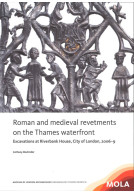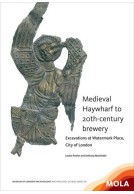Life and Death in London's East End (Paperback)
Imprint: MOLA (Museum of London Archaeology)
Pages: 100
Illustrations: col pls
ISBN: 9781901992496
Published: 12th December 2004
Script Academic & Professional
Pages: 100
Illustrations: col pls
ISBN: 9781901992496
Published: 12th December 2004
Script Academic & Professional
You'll be £9.99 closer to your next £10.00 credit when you purchase Life and Death in London's East End. What's this?
+£4.99 UK Delivery or free UK delivery if order is over £40
(click here for international delivery rates)
Need a currency converter? Check XE.com for live rates
(click here for international delivery rates)
Need a currency converter? Check XE.com for live rates
In 1991 Spitalfields Market in London's East End was relocated, paving the way for one of the largest and most complex excavations ever launched in London, taking place on a site measuring almost thirteen acres. This superb book tells the story of the excavation and the 2000-year history of the area from the Roman period to the present day. Details on the finds recovered, and the methods and recording systems used, are interspersed with a narrative history of the site. The book begins with the Roman burial ground and the remains of a wealthy Roman woman and her sarcophagus which became the focus of a memorable episode of Meet the Ancestors . The book then moves on to the medieval period and the 12th-century hospital which was founded at Spitalfields along with its church, infirmaries and other buildings, and burials. Finds from this period are supplemented with broader discussion of life in medieval London, such as disease and medicine, and the changing landscape around the site. During the Reformation, the hospital and priory were closed but the story of the site continued. The land was taken by the Crown, parts of the site were leased, most notably as artillery ground, with new housing and cottage industries to follow. Finds dating to the English Civil War, evidence relating to the transformation of the site from an aristocractic enclave to a suburb of immigrants, the redevelopment of the area in the 17th and 18th centuries, through to the opening of Spitalfields Market in 1682, brings us full circle.
Other titles in MOLA (Museum of London Archaeology)...















